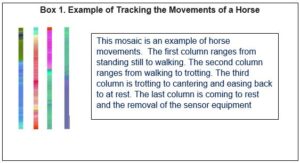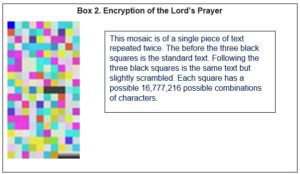Photonic Computing
Tony Nolan and Others [1]
Analytics Evangelist
Light reflects off everything, emitting a colour. Humans and animals also send and receive colours with specific meaning, making it the world’s biggest communication medium. In the natural world, light is used for data processing and calculations. But what if we applied the same use colour for data processing and calculations in the artificial world?
Photonic computing refers to using light to represent data and to do computer operations. Light can replace traditional binary representations to perform these tasks. That is, light can be decomposed into various colours that make up the colour spectrum, and these colours can be used for the above purposes.
In digital computers, a byte consists of 8 bits and is used to signify a character such as ‘A’, ‘9’ or ‘#’. This is done using an 8 bit binary code of ‘0s’ and ‘1s’. A byte of 8 bits can furnish 256 or 28 patterns. Therefore, a byte can store a number between 0 and 255 for numerical values.
A binary representation of characters fits in neatly with the use of ‘on/off’ switches found in integrated circuits. Here the ‘on’ state with the switch represents the digit ‘1’ and off the digit ‘0’. As the number of bytes used for the numeric representation of data increases is size, the underlying binary representation becomes arithmetically large. Therefore, large numbers written in binary form require significant storage capacity.
In contrast, the use of light to represent data provides the opportunity for multidimensional, parallel, compact and high speed data storage and computations. This arises because data can be represented in five dimensions that describe light including colour (i.e. red, green and blue hue), brightness and saturation. That is, these dimensions provide a compact visual representation of large volumes of data. One pulse of light of a few milliseconds can represent a number between 1 and a number the size of 1,099,511,671,776 using three colours plus brightness and saturation.
When it comes to optical data storage, researchers at three Australian universities [2] have demonstrated a novel and energy-efficient approach to storing data using light. They are developing technology based on nanocrystals with light-emitting properties that can be efficiently switched on and off in patterns that represent digital information. The researchers use lasers to alter the electronic states, and therefore the fluorescence properties of the crystals. These fluorescent nanocrystals could represent a promising alternative to traditional magnetic and solid-state data storage.
When it comes to calculations and transformations using light, one possible solution is to use the equivalent of logarithms where numbers are transformed into log values; mathematical operations are performed on the numbers such as addition or subtraction; then the results are converted back to numerical results. From another perspective, Williams [3] drew attention to solving 2D mathematical equations using colour. He stated that colours are a clever way of representing vectors, and can be applied to complex numbers.
Two examples where light can be used to represent data include: tracking the movements of entities such as people, animals and cars; and the encryption of messages.
Tracking Movements
When movements are being mapped, a photonic approach gives 16,777,216 [4] different three dimensional (3D) positional data points using red, green and blue hues. This creates a mosaic pattern where the movements are represented as single colours. When multiple observations are taken and are visually examined, rhythmic patterns and positional variations within those rhythmic patterns can be identified.
For the above example in Box 1, a 3D sensor was mounted on a horse and then the horse was ridden around a set course for a specified time. Using this approach, it is possible to identify specific way points and any variations in the horse’s movements. This data could be used to identify any anomalies in the horse’s gait, which could indicate possible lameness and the degree of this problem. If a regular starting point could be established, then the data set could be turned into a time series data set with comparison of performances possible over repeated occurrences, as shown in the example in Box 1.
Encryption of Messages
With a photonic approach it is possible to compress and store data in an optical format. This allows it to be transferred and accessed from an image file rather than an ASCII based one. In the example in Box 2, there is a coloured pattern representing the Lord’s Prayer from the Christian Bible. It has been transformed and compressed from text to a colour mosaic where one tile contains three pieces of data. However, the image can have a number of adjustments made to make it harder to decode and read. By changing the colour combination order, such as changing a red, green and blue to a blue, red and green sequence, or by adding a weighting factor, the message within the image is encrypted and cannot easily be deciphered without the key.
The message can also be encrypted before being converted into an optical format. This would make it many times harder to decrypt.
Other Applications
The above examples illustrate that there are potentially many practical uses of a photonic approach to computing; it can be used to store and transmit compressed and encrypted data; it can track the movements of people, other animals and mechanical objects; and it can identify their colour signatures. This can assist with safeguarding data from unauthorized intrusions, with controlling traffic flows, with teaching intricate and highly skilled movements in sports such as with tennis shots and with detecting criminals, terrorists and similar where a photonic detection is used with facial recognition [5]. It can also assist with measuring the nutrients, moisture and pesticides in agriculture fields, and with diagnosing diseases based on their spectral patterns. The potential uses of photonic computing are many.
It is also considered that photonic computing could fill the gap between traditional digital computers and the promise of quantum computers. Quantum computing uses quantum-mechanical principles to perform numerical operations. They would theoretically be able to solve certain problems much more quickly than any classical computers that use even the best currently known algorithms.
Quantum computers [8] promise to run calculations far beyond the reach of any conventional supercomputer. They might revolutionize the discovery of new materials by making it possible to simulate the behaviour of matter down to the atomic level. They could upend cryptography and security by cracking otherwise invincible codes. There is even hope they will supercharge artificial intelligence by crunching through data more efficiently.
Photonic computers will not process numbers at the super speed of quantum computers, but they offer the possibility to outperform conventional computers in data processing and scientific calculations. They can do this without the current technical complications of quantum computers that are very sensitive to temperature and other environmental conditions.
It is added that a tri-coloured light emitting diode (LED) commonly used as light bulbs, when used as a transmitter and a light variable resister (LVR), or when used as a receiver behind a single colour pass filter, can be employed to build a photonic computer. Any school child using a basic electronic kit ‘such as Arduino or Raspberry Pi’ purchased online can do this. We even have an app Android app called APIAR that can do photonic operations.
The future may see the progression of digital computers, photonic computers and quantum computers with each having a particular strength and each having a particular niche where they perform best.
Conclusion
The potential of photonic computing is considered immense. These computers could confer many possible advantages with storage, transformation and transmission of data, with doing mathematical operations, with encryption of information and with authentication of people and the provision of privileges. The next steps are to see to what extent these potential uses can be realised. As suggested above, these computers could fill the gap between digital computers and the great promise of quantum computers.
Notes
- Other contributors include Tony’s wife Emily, Stewart Turner, Garry Mitchell, Charles Palmer and Warwick Graco
- Riesen, X. Pan, K. Badek, Y. Ruan, T. M. Monro, J.Zhao, H. Ebendorff-Heidepriem and H. Riesen (2018)Towards rewritable multilevel optical data storage in single nanocrystals. Optics Express, 26, 9, 12266-12276. •https://doi.org/10.1364/OE.26.012266
- See https://hackaday.com/2018/03/26/solve-2d-math-equations-colorfully/
- Each pulse of light that is made up of the three basic hues of red, blue and green can represent a number between 0 and 16,777,216. That is,256 (red hue) * 256 (green hue) * 256 (blue hue) = 16,777,216 or 224 colours
- https://en.wikipedia.org/wiki/Facial_recognition_system
- https://en.wikipedia.org/wiki/Video_card, https://computer.howstuffworks.com/graphics-card1.htm, https://en.wikipedia.org/wiki/Graphics_processing_unit and https://www.techspot.com/community/topics/cracking-passwords-using-nvidias-latest-gtx-1080-gpu-its-fast.229218/
- https://en.wikipedia.org/wiki/Blockchain and I. Bashir (2017). Mastering Blockchain. Packt Publishing, Ltd and D. Tapscott and A. Tapscott (2016). Blockchain Revolution: How the Technology Behind Bitcoin Is Changing Money, Business and the World. London: Portfolio Penguin
- https://en.wikipedia.org/wiki/Quantum_computing and A. Wichert(2014). Principles of Quantum Artificial Intelligence. World Scientific Publishing Co and S. Akama (2014). Elements of Quantum Computing: History, Theories and Engineering Applications. Springer International Publishing

